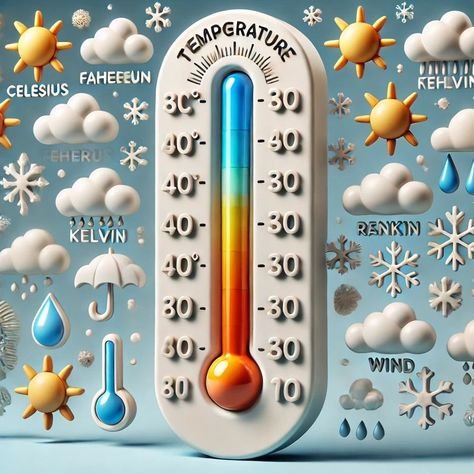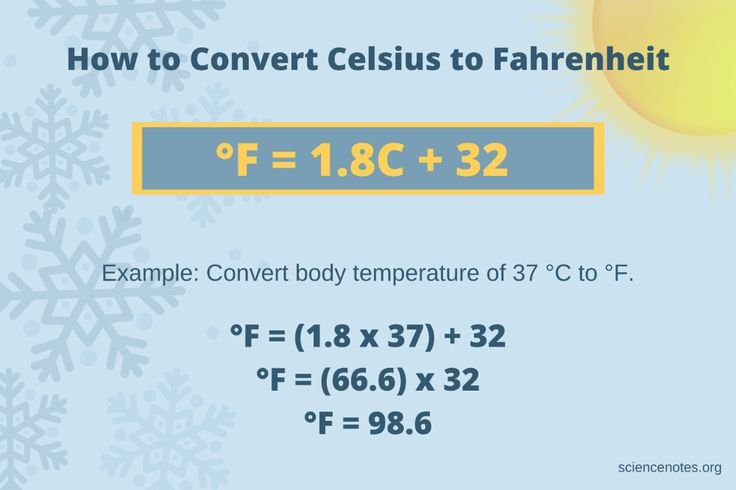Understanding the temperature conversion from 58 Celsius to Fahrenheit is essential for various applications, including cooking, scientific measurements, and everyday tasks. This article provides a comprehensive guide to converting 58 Celsius to Fahrenheit, delving into the science, methods, and practical examples to ensure clarity for all readers.
Table of Contents
What Does 58 Celsius Mean in Fahrenheit?
The conversion from Celsius to Fahrenheit involves a simple formula. To convert 58 Celsius to Fahrenheit, you multiply the Celsius value by 9/5 and then add 32. Using this formula:
Fahrenheit (F) = (Celsius × 9/5) + 32
For 58 Celsius to Fahrenheit:
F = (58 × 9/5) + 32 F = 104.4 + 32 F = 140.4
Thus, 58 Celsius to Fahrenheit equals 140.4 Fahrenheit.
Why Convert 58 Celsius to Fahrenheit?
The need to convert 58 Celsius to Fahrenheit often arises in everyday scenarios:
- Cooking and Baking: Recipes may list temperatures in Celsius, but ovens in the U.S. typically use Fahrenheit.
- Weather Reports: Understanding temperature readings in different countries helps travelers prepare appropriately.
- Scientific Applications: Laboratories may use Celsius, while documentation might require Fahrenheit.
The Science Behind Temperature Scales

Celsius Scale
The Celsius scale, developed by Anders Celsius, is based on the freezing and boiling points of water:
- 0°C: Water freezes.
- 100°C: Water boils.
Fahrenheit Scale
Developed by Daniel Gabriel Fahrenheit, this scale sets its benchmarks differently:
- 32°F: Water freezes.
- 212°F: Water boils.
When comparing the two scales, converting 58 Celsius to Fahrenheit highlights the difference in their increments and reference points.
Practical Methods for Conversion
- Using the Formula The most reliable way to convert 58 Celsius to Fahrenheit is by applying the formula mentioned earlier. This method ensures accuracy.
- Online Calculators Numerous online tools allow quick conversions. Simply input 58 Celsius, and the tool will display the equivalent Fahrenheit value.
- Estimation Techniques While less accurate, you can estimate by doubling the Celsius value and adding 30. For 58 Celsius, doubling gives 116, and adding 30 results in approximately 146 Fahrenheit (a close approximation to the actual 140.4 Fahrenheit).
Common Contexts for 58 Celsius
Weather Conditions
A temperature of 58 Celsius is extreme and unlikely in most climates. Such a high temperature might occur in specific industrial settings or rare environmental conditions.
Cooking Scenarios
In cooking, 58 Celsius to Fahrenheit conversion is significant for low-temperature techniques, such as sous-vide, where precision is critical.
Industrial Applications
Certain manufacturing processes require temperatures around 58 Celsius, making accurate conversions essential for maintaining standards.
Comparison with Other Temperatures
Understanding 58 Celsius to Fahrenheit is easier when compared to other conversions:
- 0°C = 32°F
- 25°C = 77°F
- 58°C = 140.4°F
- 100°C = 212°F
This comparison shows that 58 Celsius to Fahrenheit represents a moderately high temperature.
Tips for Accurate Conversions
- Memorize Key Points: Knowing the freezing and boiling points of water in both scales helps in quick estimations.
- Use Reliable Tools: Always double-check with trusted calculators or apps when precision matters.
- Understand Context: Recognizing the context of the temperature (e.g., weather, cooking) ensures appropriate application of the conversion.
Fun Facts About Temperature Conversion

- The Celsius and Fahrenheit scales intersect at –40 degrees, where –40°C equals –40°F.
- Converting 58 Celsius to Fahrenheit is a common exercise in educational settings to teach students the relationship between temperature scales.
Also read About Blog/Turbogeekorg: A Comprehensive Insight
Conclusion
Converting 58 Celsius to Fahrenheit is straightforward when you understand the formula and its applications. Whether you’re following a recipe, interpreting weather data, or engaging in scientific work, mastering this conversion enhances your ability to adapt to different systems. With 58 Celsius equaling 140.4 Fahrenheit, this knowledge bridges gaps between metric and imperial systems, promoting global understanding.
By practicing and applying these conversions, you can confidently handle temperature-related tasks in various aspects of life. Remember, the key to accuracy lies in understanding the formula and using reliable tools for verification.


